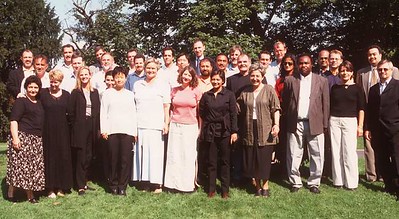
I get inspiration for a lot of my blogs from stories that my friends tell me about their own volunteering experiences, from comments on my blogs from volunteers, and from my own attempts at volunteering.
Here’s a comment I got recently from a neighbor who is volunteering to send postcards to registered voters regarding the upcoming elections here in the USA. Through an advocacy group, volunteers like her handwrite messages on the postcards encouraging the recipient to vote. It’s very important that the postcards be handwritten and personalized – recipients are more likely to read the postcards because they are handwritten and because they are coming from a volunteer, specifically – not a paid campaign worker. Here’s her message to me about her frustration:
Jayne, here’s a suggestion for a blog post: please do not simply assume your volunteers will do more than they have committed to. I committed to write 30 postcards this week. For me, this was a stretch as far as my time goes. My contact at this organization brought me *60* postcards and a list of where to send them, plus a request for three postcards written in Spanish (but not providing me with a Spanish-language script). She said, “Can you just ask somebody else to write the rest if you don’t want to?” Now that I am actually looking at the instructions for writing this postcard, I see that they asked me to fit far more text into the postcard that is possible to fit. So they didn’t test their idea. Grrrr. This makes me amazingly cranky and demotivates me to write her damn postcards. Also, I am cranky these days anyway.
This person is one of the most dedicated campaign volunteers I have ever seen: I’ve seen her at demonstrations of all kinds, she has a sign in her front yard for a campaign she supports (and offered them to others in the neighborhood), she shares advocacy messages on her Facebook page, and I see her a day or two every week walking down to our nearby post office with a stack of postcards she has personally addressed. She feels a great sense of urgency regarding the upcoming election, just like so many volunteers do about the nonprofit they are supporting. That commitment and that sense of urgency are easy to take advantage of when an organization needs additional help. At first, a volunteer might not say no: they feel needed, they feel valued, and they feel like they are really helping out in a dire time of need. But if this keeps happening, volunteers QUIT. And they send messages to me about how frustrated they are, and I get to write a blog about it!
Don’t put volunteers in an awkward situation when you need more work done than they have agreed to do. Tell them your need for additional hours or for an additional task to be done and say, “if this is too much for you, please say so – we don’t want to overwhelm you, we value your service.” And mean that. If the volunteer says no, respect the no.
What’s your alternative? Surely you have an online community of all of your local volunteers, and you can just post to that community, let people know you have extra work to be done, and ask who could do it – right?
Weeks ago, this particular advocacy group should have made a list of assistive independent living centers, where residents live on their own in their own apartments with minimal assistance – where they still prepare their own food, still live largely independently, still drive, etc. Because of the global pandemic, many of these senior citizens are stuck in their homes without much to do, and they would have LOVED to have volunteered for an initiative like this (and if they are anything like my maternal grandmother, they have BEAUTIFUL cursive, legible handwriting – I always recognized my grandmother’s letters, which she wrote to me until she died at almost 102). Instead, they kept going back to the same well – and the well is running dry.
Other blogs about frustrated volunteers:
- Volunteer (mis)management at schools – a first-person account.
- School parent volunteer engagement ethics.
- How to get rid of volunteers.
- Still trying to volunteer, still frustrated.
- Song of frustration re: volunteering.
- A missed opportunity with volunteers.
- latest moment of volunteer management madness.
- What you say vs. what you do re: volunteers.
- I’m a Frustrated Volunteer.
- I’m a volunteer & you should just be GRATEFUL I’m here!.
- The volunteer as bully = the toxic volunteer.
- How to complain about your volunteering experience.

If you have benefited from this blog or other parts of my web site and would like to support the time that went into researching information, developing material, preparing articles, updating pages, etc. (I receive no funding for this work), here is how you can help.







